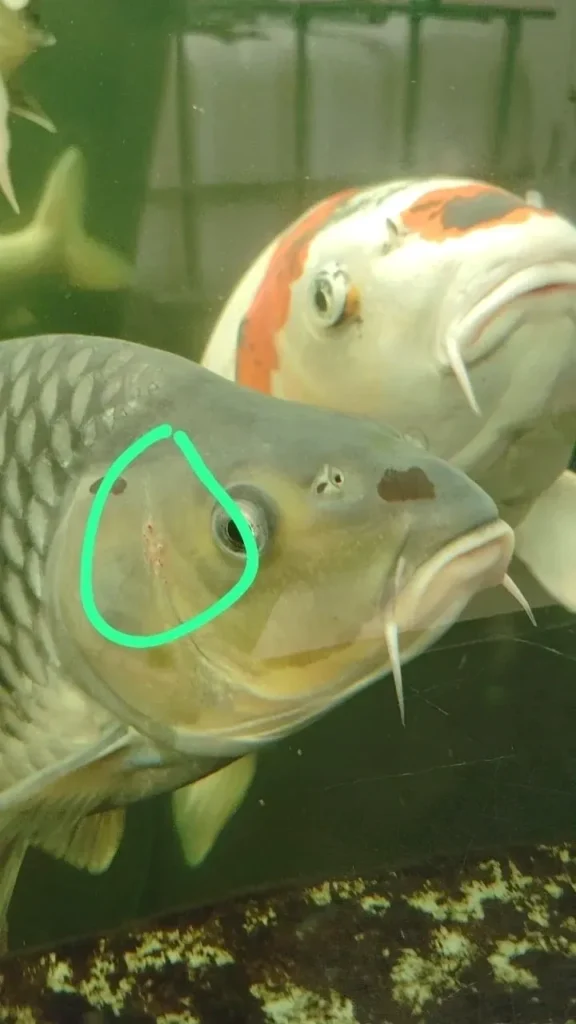
Close

Welcome back Crew, glad to be writing for you guys again! Today, we're back with another one! This time we are going into one of the most crucial topics for any koi keeper, farmer or dealer. That is viral diseases and bacterial infections in koi ponds. Understanding these threats is essential for keeping a healthy pond environment and ensuring the long term well-being of your koi.
Many Koi keepers have had dieouts and sudden mortalities occur in short spaces of time, most of the time when a koi pond is not cared for by an experienced hobbyist the first symptoms can easily go unnoticed. Most often the symptoms can be as simple as pinkening of the skin, small ulcers or irregularity in swim patterns, which I hope you learned about in our last article.

Many Koi keepers have had dieouts and sudden mortalities occur in short spaces of time, most of the time when a koi pond is not cared for by an experienced hobbyist the first symptoms can easily go unnoticed. Most often the symptoms can be as simple as pinkening of the skin, small ulcers or irregularity in swim patterns, which I hope you learned about in our last article.
Bacterial Infections in Koi Ponds
Bacterial infections can arise from a variety of sources and are often linked to poor water quality and stress. Understanding the types of bacteria and how they affect koi is critical to understanding the bacterial infection that your koi are battling. It's also important to know that these bacteria occur naturally and are present in many of our ecosystems, controlling bacterial outbreaks is completely based on your water quality management.
Firstly there are Gram-Positive and Gram-Negative Bacter
Bacterial infections are one of the most frequent health issues affecting Koi, often triggered by poor water quality or stress. Pathogens like Aeromonas, Pseudomonas, and Columnaris can cause visible sores, fin damage, and even internal infections. Early detection, proper diagnosis, and professional treatment are key to recovery, especially since many bacterial issues require specific antibiotics or lab-tested remedies.
Always quarantine new fish for upto 4-6 weeks before introducing them to your main population. This helps prevent the introduction of diseases. Its also important in this quarantine process to stress the fish with different temperature swings to bring out any of these deseases if they exist in dormancy. This process is something we at Ochiba do for you during our import quarantine process to ensure they are healthy before shipping.
Maintain pristine water conditions by regularly testing and adjusting parameters such as pH, ammonia, nitrites, and nitrates. Good filtration and regular water changes are essential.
Minimize stress by providing a stable environment, avoiding overcrowding, and ensuring adequate nutrition. Stress can weaken koi's immune systems, making them more susceptible to these infections.
Observe your koi daily for any signs of illness or unusual behavior. Early detection is key to successful treatment as we discussed in detail previously.
Keep your pond and equipment clean. Disinfect nets, tanks, and other tools regularly to prevent the spread of pathogens.
This information has taken a very long time for me to understand at a personal level and I hope it helps you to understand the importance of BioSecurity and Hygiene in relation to your koi pond and filtration. Even introducing plants and other fish from aquarium shops are very likely to cause issues like this. If plants are being added from wild streams and lakes its critical to thoroughly disinfect in Potassium Permanganate for at least 30 mins. Additionally I want to stress that the usage of Metrogyl, Amoxicillin, Tetracycline and other store bought antibiotics are not the solution to these diseases and dosing these antibiotics into your ecosystem is a health hazard for your family, neighbors and yourself. So please if you need any assistance with a severe bacterial infection you can get the support you need from us or from your veterinarian. It is critical to not add antibiotics without a professional's advice. (If you've read till here, I really appreciate it and I would love if you comment “Open to Learning” on our crew group so I know who’s actually learning from these articles that im writing!)
We personally work with Fisheries experts and Govt labs to procure the correct treatments and in case of Severe infections in our customers collections we can help with the lab testing and treatment with industry grade medications.
At Ochiba Koi India, I personally look into the quarantine of the stocks that are imported and we take the responsibility of identifying and stabilizing our stocks before making them available for sale, Additionally the treatment of all possible ailments and diseases are possible if you connect with our team in time. I'm more than happy to help with your issues if you drop me a message. Our team can also ship our the required medication that we advise to keep around so during emergency treatment you have the required medication to treat.
Hope this was an interesting read and it didn't get too boring there! Most importantly I hope I was able to help you understand these factors better. I will further go into these individually at a later date! Until then, Thanks for reading!
Based in Pune, we proudly serve koi lovers across Mumbai, Pune, Nashik, and all of Pan India—with Nishikigoi Direct Delivery available worldwide.
Ready to build your dream koi pond or add stunning Japanese koi to your collection?Call us, visit our facility in Pune, or explore global delivery options.
